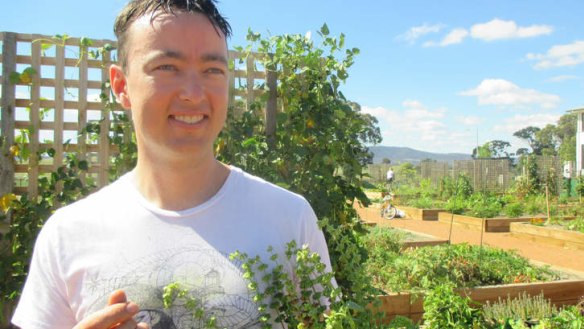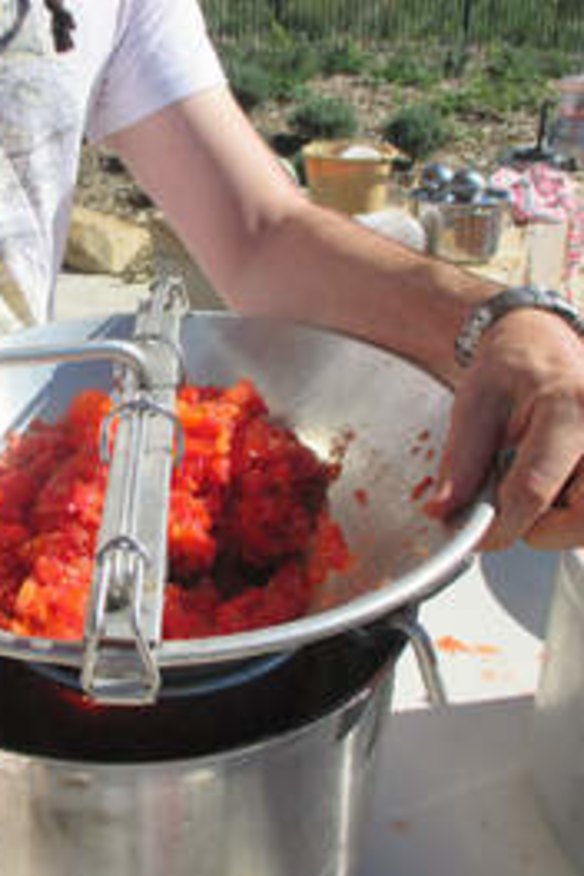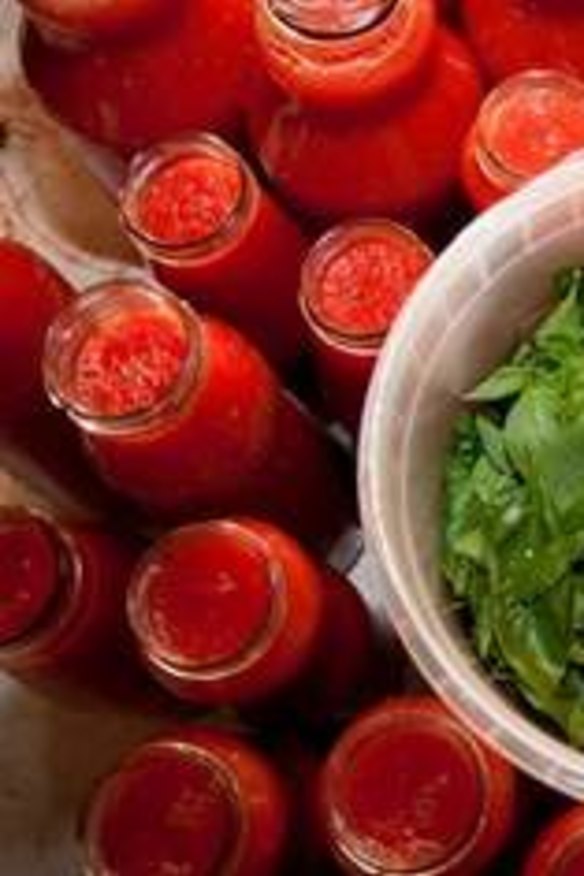Festival of the tomato at Crace

Gathering outdoors to make passata is a lively autumnal activity that should be encouraged. At the organic community garden in Crace, more than a dozen plot-holders got together on a recent Saturday for their inaugural tomato workout. These included John and Nicole Atwood who grew red cherry and yellow per tomatoes and harvested 10 kilograms; Bonnie Allen, who also picked about 10 kilograms of tigerella, green zebra, black russian, grosse lisse and baby red tomatoes; and Josh Marks and Gaelle Gallois-Marks who grew six kilograms of roma, english rounds and cherry tomatoes. Other growers contributed up to 25 kilograms each.
THE BIG DAY
Participants were asked to supply their own bottles or pickling jars for the passata but two of the plot-holders, Mike Xanthis and Greg Parish decided, in the name of community gardening, that they should drink their way through more than 90 bottles of beer during the three months of summer. For hops aficionados, all the beer was James Squire golden ale. There were also some green glass apple cider bottles from Pauline Parish, Greg's wife, who does not drink beer. A bottle capper was purchased for the event and 200 crown seals were purchased from the Home Brewer outlet in Kambah. They used 30 kilograms of tomatoes in this first passata-making day. That resulted in 25 litres of passata, filling 57 bottles. The empty beer and apple cider bottles were sterilised by putting them through the full cycle in a dishwasher.

Crace resident and plot holder Bonnie Allen said she took a Darwinian approach to her garden bed and only watered once a week during summer, as she was pregnant. A contented 11-week-old baby son, Arthur, came to the passata-making day. Wendy Frecklington brought pumpkin scones to share and grower Ayami Xanthis displayed the beautiful flowers of Japanese glory vine Asagao growing on a frame in her vegetable bed.
Josh Marks, who is a chef, was the active overseer of the passata-making.
He and his wife, Gaelle, provided huge pots for the process and a four-litre tin of the Spanish olive oil La Espanola (available from Canberra supermarkets).

Josh's passata for home gardeners
5kg ripe home-grown (or bought Roma) tomatoes
50ml extra virgin olive oil
5 tsp salt
4 tsp sugar (depending on natural sweetness of the tomato)
10-15 basil leaves
Sterilised glass bottles to hold about four litres of liquid
Briefly blend tomatoes in a food processor until coarsely blended (take care not to over-blend as this will break down the structure of the tomato). Pass the blended tomato through a mouli until you have extracted all the juice. Discard the seeds and skins. Season with the salt and mix in the olive oil. Taste for the salt and sugar, adjust if necessary. Place basil leaves in bottles and fill with the tomato sauce, leaving about a four-centimetre gap from the top. Seal the bottles with caps and check each one to ensure a perfect seal.
In a pot large enough to hold all the bottles, place a clean tea towel on the bottom and begin to lay in the bottles head to tail. Fold the tea towel over and place the next layer of bottles on top. The idea is to use the teatowel to cushion the bottle to minimise the risk of breakage. Place the pot on the stove top and then fill it with cold water (this avoids heavy lifting).
Cover the bottles completely then bring the water to the boil.
Once the water is at a rolling boil, reduce the heat to a brisk simmer and cook for 30 minutes.
Allow bottles to cool completely in the water. Remove them and dry with a clean cloth. Inspect each one for signs of leaking.
Store in the fridge or a dark cupboard. Use unopened bottles up to three months after production and consume within 3-4 days after opening.
>> Susan Parsons is a Canberra writer.
Restaurant reviews, news and the hottest openings served to your inbox.
Sign up